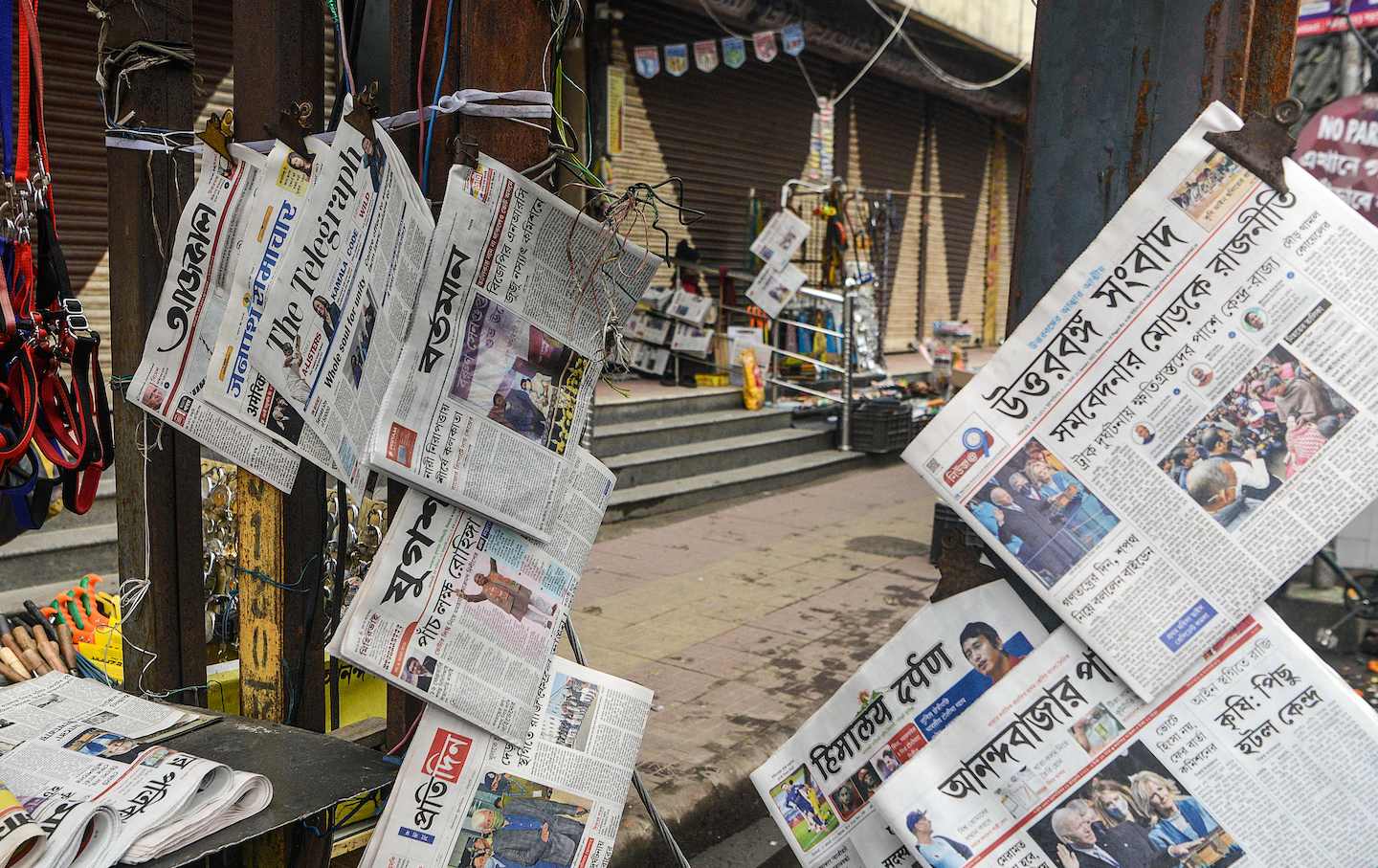
A recent study has revealed that America is losing two newspapers every week. However, in India, the newspapers’ advertising and subscription revenue is set to increase by 20 per cent next fiscal year
There are very depressing developments concerning the printed newspapers in the US. Digital media is threatening the very survival of the newspapers as we see them today. A recent study by Northwestern University’s Medill School of Journalism, Media and Integrated Marketing Communications has revealed that America is losing two newspapers every week, though most of these happen to be weeklies.
According to the study, the number of newspapers in the US came down to 6,377 by the May-end in 2022 from 8,891 in 2005. This is not owing to the coronavirus pandemic though 360 newspapers have declared closure since the end of 2019. However, except for 24, all the ill-fated publications were weeklies. Sadly, the number of journalists working in print media has come down to 31,000 from 75,000 as reported in 2006. The number of printed daily newspapers (100 of them are considered truly dailies) is also declining, but, interestingly, the uneasy development has been caused mainly by the growth of newspaper chains, national and regional ones, which have been buying smaller publications. The annual newspaper revenue also fell to $21 billion from $50 billion during this period as it is believed that advertisers now find digital news platforms more attractive and paying.
Now the good news. In India, however, the situation is very encouraging, contrary to what is happening in the US. Rating agency Crisil came out with a study in March 2022, claiming that Indian newspapers’ advertising and subscription revenue is set to increase by 20 per cent next fiscal year, from Rs18,600 crore in 2021 to Rs 27,000 crore (the pre-pandemic level was Rs32,000 crore). This is despite the fact that the cost of the newsprint has gone up substantially owing to the supplies having been hit hard by the unending Russia-Ukraine war. The reason is that Russia has been the biggest newsprint exporter to India for a long time.
It must be pointed out here that newsprint contributes to 30-35 per cent of the total cost of a newspaper and there has been a 60 per cent increase in the newsprint price this year mainly because of the war in Europe. Yet, the rising cost of newsprint has been found to be less painful because of the circulation of newspapers not reaching the pre-pandemic level. As we all know, the production cost of a newspaper copy is far higher than charged by newspaper managements.
The newspaper reading public now prefers to get its news hunger satiated through digital media more than print media, but most people buy newspapers for greater satisfaction and better quality of writing. Newspapers any day remain more reliable and trustworthy because of their strict system of checking and cross-checking as news stories pass through various stages before getting into print.
Despite all this, the circulation of Hindi and regional language dailies has been rising fast after a sharp decline in the intensity of the pandemic. English language newspapers, however, are slower in getting new readers, which is not surprising keeping in view the reality that English remains confined mainly to the elite classes.
In India, too, one can see a major threat to print media from its digital contenders in the coming few years as the situation exists in the US and other Western democracies. Already for a large number of people, digital media is the preferred source of news today. But digital media, as the situation prevails, is also helping print media to grow as serious newspaper readers rely on the printed word more than what they get in the digital form and through TV channels. How long this situation will continue remains to be seen.
As we see it today, digital news platforms are the first to report a development which is followed by television channels. Newspapers are the last to carry it, though one can find the latest news on their digital platforms the same day in seconds after a news story breaks. So, the question is: keeping the quality and reliability factors aside, why should anyone read printed newspapers? Will there not be a day when people will stop reading printed newspapers? This question was recently put to some experts by an international information disseminating organisation called Quora and their answers were interesting.
A novelist expressed the following viewpoint, “I can foresee a world in which a few print newspapers exist as a somewhat niche product sustained by a relatively small subscriber base of enthusiasts who probably pay more in real terms for their papers than they do today. However, he is not very enthusiastic about the future of printed publications. He said, ” As a journalist myself, who has witnessed at first hand the closure of numerous print publications and the layoffs accompanying these closures, my view is that the outlook for print is not good.”
An author, who claims to have worked for Reuters and Time magazine, is hopeful of the future of newspapers though times are bound to change. “There will always be a place for print. There is something uniquely satisfying about holding a paper in your hands and it adds solidity to the information you are reading. There are also studies indicating that we absorb information from print media better than what we read online, ” asserts the author.
According to a veteran journalist, “They are both dying out (some have ceased to exist) and evolving. They are dying out because of decreased advertising and circulation. They are evolving because all of the major print newspapers that I know about have an online presence, delivering basically the same content via the web.”
A study conducted a few years ago made it clear that the printed word will never get extinct. It will survive despite the trying times it would be faced with. Experts are of the view that printed papers will continue to be published, but these would be too costly and very few people would be able to afford such publications. Those who value quality and reliability will continue to patronise print media.
By all accounts, it appears that in India, the onslaught of digital media is unlikely to be as severe as it is seen at this stage, and the situation would favour the printed newspapers. This is because of poor Internet connectivity and speed in the villages. This situation is bound to come in the way of web newspapers or news portals becoming a replacement for the printed papers.












